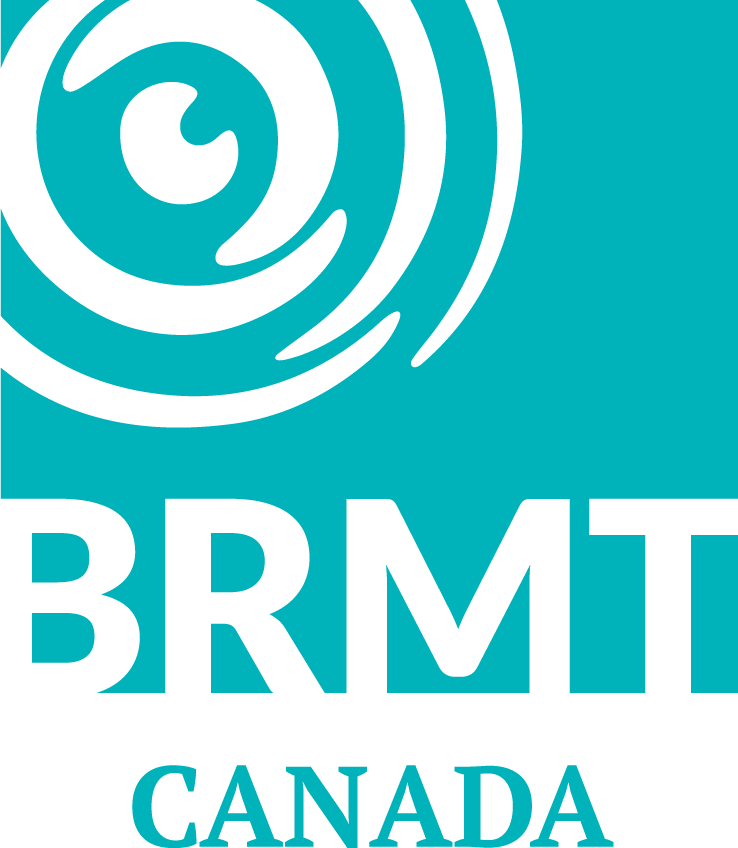Amphibian, Spinal Galant & Spinal Perez Reflex
The Amphibian Reflex helps to develop cross lateral movements such as crawling, walking, and skipping. When the Spinal Galant Reflex is active, individuals may experience poor concentration and short term memory challenges, making it difficult to take in and process information. The Spinal Perez Reflex improves muscle tone along the spine.
Amphibian Reflex
The Amphibian Reflex is a lifelong postural reflex that emerges when the child is between 4 and 6 months old.
Raising the pelvis on one side causes an automatic flexion of the arm, hip and knee on the same side. The reflex is first developed in the prone position (stomach) and then in the supine (back).
The Amphibian Reflex starts developing only when a certain amount of the ATNR integration has taken place and the movements of the arms and legs are no longer dependent on the position of the head. Before the child learns to cross crawl the Amphibian reflex must be developed. This reflex helps the child to bend their legs and get up on their hands and knees. The development of the Amphibian reflex helps to integrate the Spinal Galant Reflex. If this reflex fails to develop, it may signify that the Spinal Galant, and possibly the ATNR, reflexes have not been integrated.
Adults who have not developed their Amphibian reflex often suffer from clumsiness in the lower part of their body and tension in their legs.
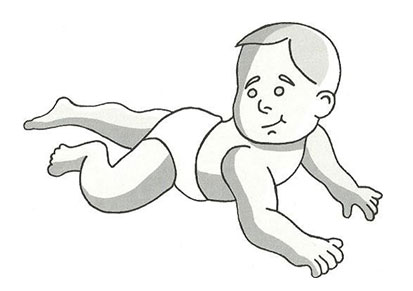
Some signs that the Amphibian Reflex may not be integrated:
Difficulties crawling, cross crawling, or with reciprocal arm movement
Active Spinal Galant and ATNR reflexes
Clumsiness in the lower part of the body/tension in legs
Uncoordinated walking, running, skipping
Games to help support integration of the Amphibian Reflex:
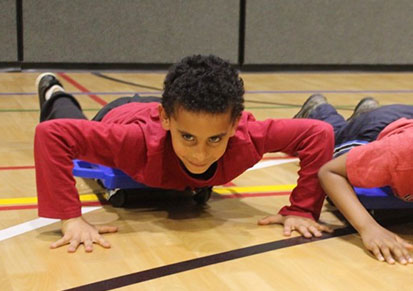
Scooter Crawling

Crawling
Primitive Reflexes
Postural Reflexes
- The Amphibian Reflex
- Crawling Reflex
- Neck and Head Righting Reflexes
Bridge or Transitional Reflexes
Spinal Galant Reflex
The Spinal Galant reflex develops 20 weeks after conception and should be integrated 3 to 9 months after delivery. This reflex is important for the conduction of body vibrations in the fetus and the development of the vestibular system. This reflex also helps the baby to move down the birth canal during delivery. If this reflex is not integrated, the development of the Amphibian Reflex may be impaired, which can cause clumsiness in the lower part of the body and tension of the legs. The Spinal Galant is also thought to help with balance and coordinating the body for crawling. There is also a correlation with children who bed wet past the age of 5 and an active Spinal Galant reflex.

Some signs that the Spinal Galant Reflex may not be integrated:
Restless, hyperactive, fidgeting
Bedwetting
Attention difficulties
Poor concentration and coordination
Poor posture
Poor short-term memory
Tight clothing, belts or leaning against the back of a chair can trigger (leads to fidgeting)
| The Spinal Perez Reflex |
The Spinal Perez reflex is a primitive reflex that emerges at birth and is integrated between three and six months after delivery. Stroking upwards from the tailbone to the top of the spine causes the baby to lift his head and bottom, bend the thoracic spine backwards and bend lower limbs.
The Spinal Perez reflex position (stroking upwards from the tailbone to the top of the spine
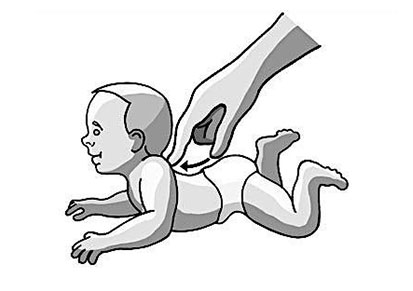
Some signs that the Spinal Perez Reflex may not be integrated:
Lack of muscle tone in the back
General hypotension
Sensitivity and muscle tension of the thoracic back
Rotated pelvis
Lower back pain and leg tension
People with a retained Spinal Perez reflex:
May be very sensitive in the thoracic back
May feel uncomfortable having people behind them
May prefer to sit against a wall or in the back of the room
Have problems sleeping on their back
Show signs of restlessness
May experience bedwetting/bladder control in children

Games to help support integration of the Spinal Galant and Spinal Perez Reflexes:
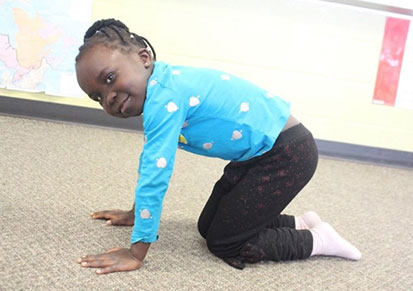
Cat Arches – Step 1
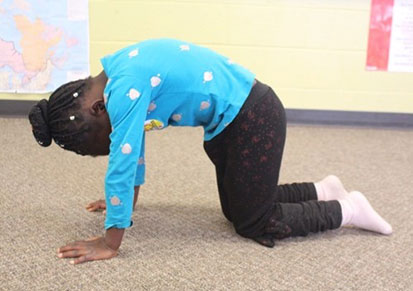
Cat Arches – Step 2

Wash the Dishes – Step 1

Wash the Dishes – Step 2
To learn more, attend a Blomberg Rhythmic Movement course or workshop!
We are always adding new course dates and locations.
